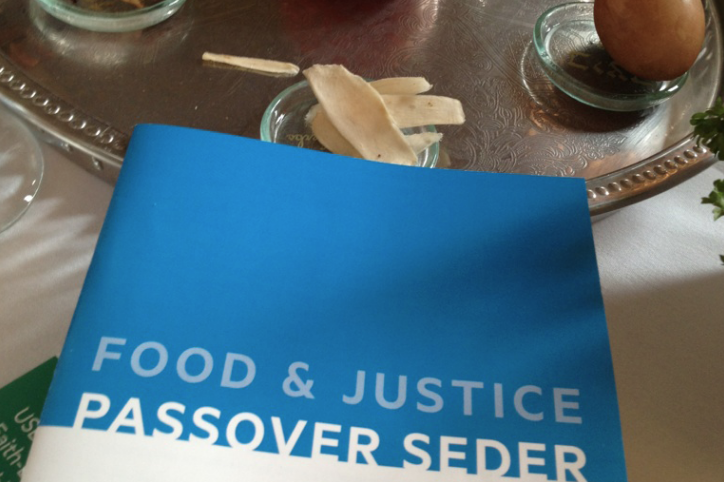(My Jewish Learning) — An important Jewish value is to invite strangers to the Passover seder, which celebrates freedom. The following tips are designed to make those at the table who are not Jewish feel more comfortable with the holiday, rituals and traditions.
1. Prepare your partner, children and guests who are not Jewish.
As more and more partners, children and extended family who are not Jewish attend seders, letting them know what to expect will be helpful. Whether you are hosting or attending a seder, explain what will happen, who will be there, what will be eaten and when, and what they will be asked to do during the meal. Tell everyone that welcoming those who are not Jewish to the seder makes it a special and more valuable occasion and that the purpose of the seder is not to proselytize, but to celebrate freedom.
2. Select the right Haggadah.
The Haggadah is the book that contains the order, blessings, narrative and songs for the seder. There are Haggadahs to reflect different approaches and needs, from traditional to liberal, from recovering alcoholics to feminists to vegetarians and more. Consider selecting a Haggadah that:
• Uses Hebrew with aligned translation and transliteration, so that people unfamiliar with Hebrew are better able to follow along.
• Is inclusive and reflects gender equality.
• Provides background and explanations for the rituals.
3. In advance of the seder, consider rephrasing parts of your Haggadah to be more welcoming to the people who will be coming to it.
Doing this with your partner’s and/or children’s help, might enable them to feel more a part of things and can unite the family.
4. Add blessings to welcome those who are not Jewish.
For some ideas, check out this article; “Five Interfaith Passover Readings You Can Add to Your Hagaddah” (18doors.org). You can include some or all of these in your own seder, or write your own blessings, with your family.
5. Assign everyone passages from the Haggadah to read aloud during the seder.
Participating in this way can give your partner, children and friends a better opportunity to experience the seder. Review the Haggadah before the seder to identify appropriate sections for them.
6. Connect the story of the Passover liberation story to other freedom stories, past or present, political and/or psychological (such as freedom from negative patterns).
If there are particular struggles that people attending your seder would relate to (such as the struggle for independence in India if an Indian woman will attend), be sure to mention them. Or discuss ten “plagues” that we face today. This discussion may engage your partner, children and friends.
7. Don’t forget to have fun.
Seders can be relaxed and informal. Some families add favorite songs that children learn in religious school, while others enjoy reading aloud Deborah Uchill Miller’s “Only Nine Chairs,” a humorous account of a family seder.
8. Remember the children.
Some families have created a “Pat the Bunny”-type Haggadah for young children, using coloring sheets and cotton balls on pictures of sheep, sandpaper on pictures of bricks of the pyramids and grape scratch-and-sniff stickers on pictures of the Kiddush cups. Some even give children “goody bags” filled with Passover symbols, frog stickers and even moist towelettes for the inevitable spills of wine.
9. Debrief after the seder.
Talk with your family about the ways in which they felt comfortable and uncomfortable. Find ways to diminish any discomfort for the coming year’s seder.





